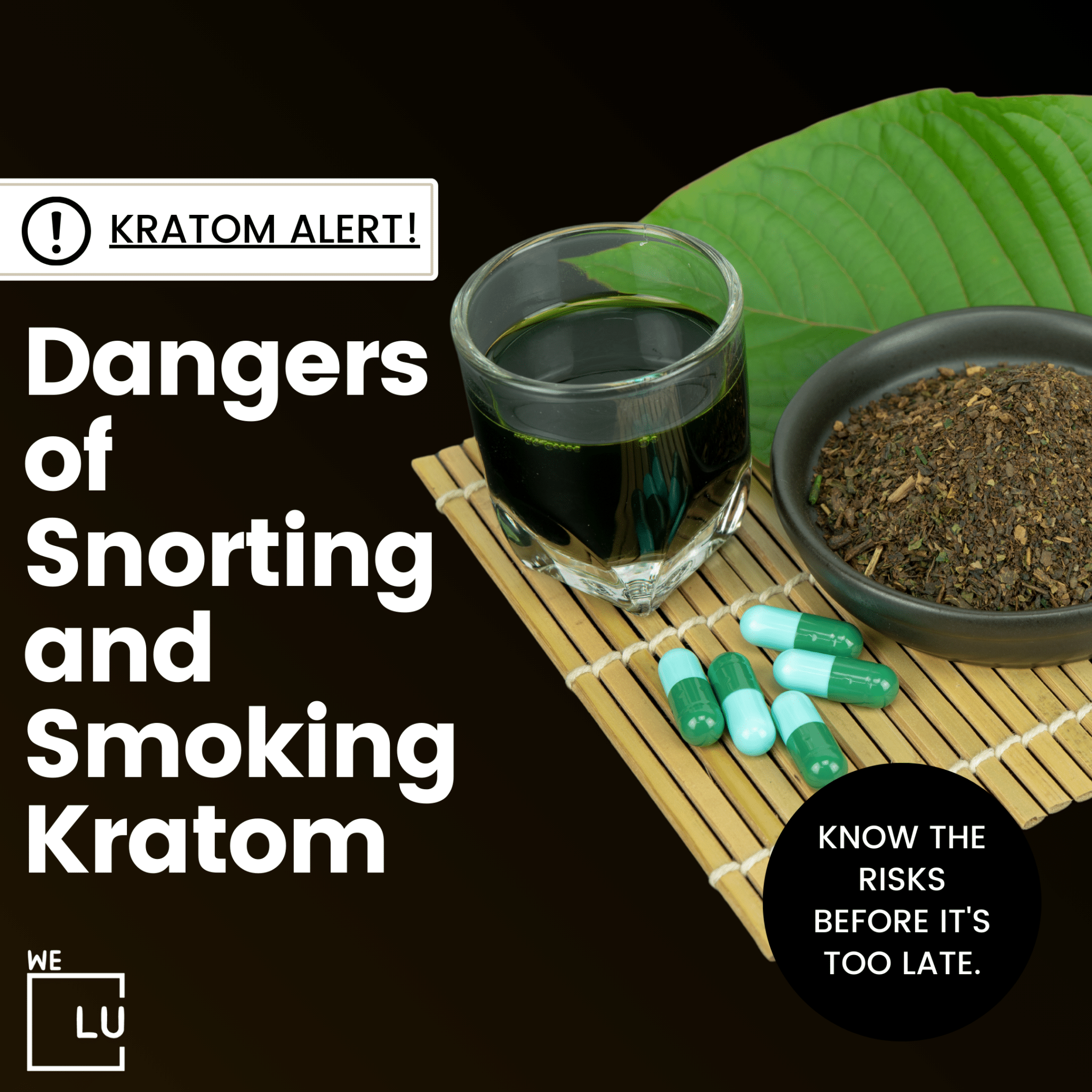What Is Tramadol?
Tramadol is a synthetic opioid analgesic used to manage moderate to moderately severe pain. Unlike traditional opioids, tramadol’s mechanism of action involves the binding of opioid receptors in the central nervous system as well as the inhibition of the reuptake of neurotransmitters like serotonin and norepinephrine. This dual action contributes to its pain-relieving properties and sets it apart from other opioids.
The medication is often prescribed for various conditions, such as post-surgical pain, injury-related pain, and chronic pain conditions. Tramadol is available in multiple formulations, including immediate-release and extended-release forms, allowing for flexibility in pain management strategies.
Patients must follow prescribed dosages and guidelines to minimize the risk of side effects, which may include dizziness, nausea, constipation, and, in rare cases, seizures. Due to its opioid nature, tramadol has the potential for abuse and dependence, and patients should use it under the close supervision of a healthcare professional. Tramadol is an effective option for pain relief, but its use requires careful consideration of individual patient factors and adherence to prescribed protocols to ensure safety and efficacy.
How Long Does Tramadol Last?
The duration of action of tramadol can vary depending on the formulation and individual factors. Generally, immediate-release tramadol provides relief for about four to six hours. This version is often taken every four to six hours for pain. On the other hand, extended-release formulations, designed to release the medication gradually over an extended period, typically provide relief for around 12 to 24 hours, allowing for less frequent dosing.
The duration of tramadol’s effects is influenced by factors such as a person’s metabolism, liver function, age, and overall health. In some cases, individuals may experience a shorter or longer duration of pain relief.
| Formulation Type | Onset of Action | Duration of Effect | Peak of Effect |
|---|---|---|---|
| Immediate-Release (IR) | 30 minutes to 1 hour | 4 to 6 hours | 2 to 4 hours after dose |
| Extended-Release (ER) | 2 hours (approximately) | 12 to 24 hours | 4 to 6 hours after dose |
These values are general estimates and can vary among individuals. The onset, duration, and peak effects can be influenced by metabolism, individual response, and overall health.
Immediate-release tramadol is often taken every 4 to 6 hours as needed for pain, while extended-release formulations are designed for around-the-clock pain management.
What Is The Half Life Of Tramadol?
The half-life of tramadol, which is the time it takes for half of the drug to be eliminated from the body, is approximately 5 to 6 hours for the immediate-release formulation and about 7 hours for the extended-release version. This means that after a single dose, it takes roughly 5 to 7 hours for the concentration of tramadol in the bloodstream to decrease by half.
The active metabolite of tramadol, known as O-desmethyltramadol, has a longer half-life, ranging from 6 to 9 hours. This metabolite contributes significantly to tramadol’s analgesic effects.
The half-life of tramadol can be influenced by various factors, including age, liver function, and individual metabolism. In individuals with impaired liver function or those over the age of 75, the elimination half-life may be prolonged.
How Long Does Tramadol Last In Your System?
The presence of tramadol in the body is influenced by its half-life, which is approximately 5 to 6 hours for immediate-release formulations and about 7 hours for extended-release versions. As a general guideline, it takes about five half-lives for a drug to be considered eliminated from the system. Therefore, for immediate-release tramadol, it may take around 25 to 30 hours for the drug to be mostly eliminated, while for the extended-release version, it may take up to 35 hours or more.
Tramadol is not always included in standard drug screens. Traditional opioid drug tests often focus on drugs like morphine, codeine, and heroin. Tramadol, being a synthetic opioid, may require specific testing procedures. Some advanced drug tests may include tramadol in the panel, especially if there are concerns about its misuse or abuse.
In general, tramadol and its metabolites may be detectable in various drug tests for a certain period after ingestion.
- Urine Tests: Tramadol is often detectable in urine for 1 to 4 days after the last dose. However, this can vary based on factors such as the individual’s metabolism, hydration levels, and the specific type of urine test used.
- Blood Tests: Tramadol is typically detectable in the bloodstream for a shorter duration than urine. Blood tests may detect tramadol for up to 24 hours after the last dose.
- Saliva Tests: Tramadol can be detected in saliva for a similar duration as blood, usually up to 24 hours.
- Hair Tests: Tramadol may be detectable in hair follicles for a more extended period, potentially up to 90 days. However, this method is less commonly used for tramadol testing.
How Long Does Tramadol Side Effects Last?
The duration of tramadol side effects can vary from person to person and depends on factors such as individual tolerance, dosage, and how the body metabolizes the drug. Common side effects of tramadol, including dizziness, nausea, constipation, and drowsiness, are generally temporary and may diminish as the body adjusts to the medication.
Here is a general overview of how long some common side effects of tramadol may last:
- Dizziness and Drowsiness: These effects often occur shortly after taking tramadol and may persist for a few hours. As the body becomes accustomed to the medication, these symptoms diminish.
- Nausea and Vomiting: Nausea is a common side effect of tramadol, and it may last for a few days as the body adjusts. Taking tramadol with food or as directed by a healthcare provider can help alleviate nausea.
- Constipation: Constipation is a common side effect of opioids, including tramadol. It can persist as long as the person is taking the medication. Increasing fluid intake, dietary fiber, and physical activity can help manage constipation.
Each person’s response to tramadol is unique, so the duration and severity of side effects can vary.

Skip To:
Learn More:
- Tramadol Withdrawal Symptoms, Timeline, And Detox
- Tramadol Detox, Specifics, Statistics, Symptoms, Withdrawal, Warnings & Treatment Options
- Tramadol Interactions, Types, Risk Factors & Side Effects
- Can You Mix Tramadol And Alcohol? Side Effects And Dangers.
- Toradol Vs Tramadol. Uses, Side Effects, And Warnings
- Tramadol Vs Oxycodone, Comparison Of Side Effects & Efficacy
- Can You Snort Tramadol? Signs, Side Effects, & Treatment

Get Your Life Back
Find Hope & Recovery. Get Safe Comfortable Detox, Addiction Rehab & Dual Diagnosis High-Quality Care.
Hotline (855) 695-1160Can You Cut Tramadol In Half?
Tramadol is available in immediate-release (IR) and extended-release (ER) formulations. Immediate-release tramadol tablets are typically scored, which means they have a line down the middle, allowing them to be split in half if necessary. Extended-release formulations, on the other hand, are designed to release the medication slowly over an extended period, and they usually should not be cut or crushed as they can affect their controlled-release mechanism.
If your healthcare provider has prescribed a specific dose of tramadol and you are considering splitting the tablet to adjust the dosage, it’s crucial to discuss this with them first. They can guide whether breaking the medication is appropriate for your situation and suggest alternative strategies if needed. Self-adjusting medication doses without professional guidance can lead to inadequate pain control, increased risk of side effects, or other health complications. Always consult with your healthcare provider before making any changes to your prescribed medication regimen.
Get Help. Get Better. Get Your Life Back.
Searching for an Accredited Drug and Alcohol Rehab Centers in Near You?
Even if you have failed previously and relapsed, or are in the middle of a difficult crisis, we stand ready to support you. Our trusted behavioral health specialists will not give up on you. When you feel ready or just want someone to speak to about therapy alternatives to change your life call us. Even if we cannot assist you, we will lead you to wherever you can get support. There is no obligation. Call our hotline today.
FREE Addiction Hotline – Call 24/7
Factors Affecting How Long Tramadol Stays In Your System
Several factors influence how long tramadol, a prescription opioid medication, stays in an individual’s system. How long tramadol stays in your system can vary due to metabolism, liver function, and the specific formulation of tramadol used. The influence of each factor on how long tramadol stays in your system varies between individuals.
- Metabolism: Individual variations in metabolism play a significant role. People with faster metabolisms may eliminate tramadol more quickly than those with slower metabolisms.
- Liver Function: Tramadol is metabolized in the liver, and any impairment in liver function can affect the drug’s clearance from the body. Individuals with liver problems may eliminate tramadol more slowly.
- Age: Age can impact drug metabolism, and generally, older individuals may metabolize drugs more slowly than younger individuals.
- Renal Function: Although tramadol is primarily metabolized in the liver, its elimination products are excreted through the kidneys. Kidney function can influence the drug’s clearance.
- Dosage and Frequency: The amount and frequency of tramadol intake can affect how long it stays in the system. Higher doses or more frequent use may extend the duration of drug presence.
- Hydration: Adequate hydration supports kidney function and the elimination of drugs. Dehydration can potentially slow down the drug elimination process.
- Genetics: Genetic factors can contribute to individual variations in drug metabolism and medication response.
- Interactions with Other Drugs: Concurrent use of other medications can influence tramadol metabolism. Drug interactions may either enhance or inhibit the elimination of tramadol.
First-class Facilities & Amenities
World-class High-Quality Addiction & Mental Health Rehabilitation Treatment
Rehab Centers TourRenowned California Addiction Center. Serene Private Facilities. Inpatient rehab programs vary.
Addiction Helpline (855) 695-1160Proven recovery success experience, backed by a Team w/ History of:
15+
Years of Unified Experience
100s
5-Star Reviews Across Our Centers
10K
Recovery Success Stories Across Our Network
- Low Patient to Therapist Ratio
- Onsite Medical Detox Center
- Comprehensive Dual-Diagnosis Treatment
- Complimentary Family & Alumni Programs
- Coaching, Recovery & Personal Development Events
Risks Of Using Tramadol
Here are some potential risks associated with the use of tramadol:
- Addiction and Dependence: Tramadol is an opioid, and like other opioids, it has the potential for abuse, addiction, and physical dependence. Prolonged use or misuse can lead to the development of tolerance, where higher doses are needed for the same effect, and physical dependence, which can result in withdrawal symptoms when the drug is discontinued.
- Respiratory Depression: Like other opioids, tramadol can cause respiratory depression, especially in higher doses or when combined with other substances that depress the central nervous system, such as alcohol or certain medications.
- Seizures: Tramadol lowers the seizure threshold, and in some cases, even at therapeutic doses, it can increase the risk of seizures. This risk is higher in individuals with a history of seizures, head trauma, or certain medical conditions.
- Serotonin Syndrome: Tramadol also has serotonin and norepinephrine reuptake inhibitory effects, and when used in combination with other drugs that affect serotonin levels, it can lead to serotonin syndrome. Symptoms may include agitation, hallucinations, rapid heartbeat, fever, muscle stiffness, and coordination problems.
- GI Effects: Tramadol use can cause constipation, nausea, and vomiting, which can be bothersome for some individuals.
- Hepatotoxicity: There have been rare reports of liver injury associated with tramadol use. Individuals with pre-existing liver conditions may be at a higher risk.
- Drug Interactions: Tramadol can interact with other medications, including antidepressants, antipsychotics, and other opioids, potentially leading to adverse effects or reduced effectiveness.

Tramadol can be dangerous due to its opioid nature and the associated risks of abuse, addiction, and dependence. As an opioid analgesic, tramadol binds to specific receptors in the brain and spinal cord, altering the perception of pain. While it is effective for managing moderate to moderately severe pain, its opioid properties make it susceptible to misuse. Prolonged use or misuse of tramadol can lead to the development of tolerance, where higher doses are needed for the same effect, and physical dependence, resulting in withdrawal symptoms upon discontinuation. The potential for addiction is a significant concern, as individuals may be driven to compulsively seek and use the drug despite adverse consequences, jeopardizing their overall health.
Moreover, tramadol is associated with central nervous system (CNS) effects such as respiratory depression, sedation, and dizziness. Overdose can result in serious respiratory issues, potentially leading to life-threatening situations. Additionally, tramadol lowers the seizure threshold, and there have been reported cases of seizures, especially at higher doses or when used in combination with other medications that can reduce the seizure threshold. Due to these risks, tramadol should be used with caution and under the close supervision of a healthcare professional, and patients should be educated about its potential dangers and closely monitored for signs of misuse or adverse effects.
World-class, Accredited, 5-Star Reviewed, Effective Addiction & Mental Health Programs. Complete Behavioral Health Inpatient Rehab, Detox plus Co-occuring Disorders Therapy.
CALL (855) 695-1160End the Addiction Pain. End the Emotional Rollercoaster. Get Your Life Back. Start Drug, Alcohol & Dual Diagnosis Mental Health Treatment Now. Get Free No-obligation Guidance by Substance Abuse Specialists Who Understand Addiction & Mental Health Recovery & Know How to Help.

What Is Tramadol Used For?
Tramadol is a prescription medication primarily used for the management of moderate to moderately severe pain. It belongs to the class of drugs known as opioid analgesics. Here are some common uses of tramadol:
- Pain Management: Tramadol is prescribed to relieve pain ranging from acute (such as post-surgical pain or injury) to chronic conditions (like osteoarthritis or fibromyalgia). It can be an option for pain that is not adequately controlled by non-opioid pain relievers.
- Neuropathic Pain: Tramadol may treat neuropathic pain caused by nerve damage or malfunction.
- Chronic Pain Conditions: Tramadol might be considered for the long-term management of certain chronic pain conditions when other treatments are not sufficient.
Tramadol is unsuitable for everyone, and a healthcare professional should guide it. Additionally, due to its opioid nature, there are potential risks associated with tramadol use, including the risk of dependence, addiction, and side effects. The decision to prescribe tramadol should involve a careful assessment of the patient’s medical history, the degree of pain they’re in, and consideration of alternative treatments.
Patients prescribed tramadol should follow their healthcare provider’s instructions closely, including recommended dosage and duration of use. You must communicate any concerns, side effects, or changes in response to the medication with the healthcare provider. Tramadol should not be used in significant amounts or for longer than prescribed, and sudden discontinuation should be avoided to prevent withdrawal symptoms.
Experience Transformative Recovery at the We Level Up California Treatment Center.
See our authentic success stories. Get inspired. Get the help you deserve.



Start a New Life
Begin with a free call to an addiction & behavioral health treatment advisor. Learn more about our dual-diagnosis programs. The We Level Up treatment center network delivers recovery programs that vary by each treatment facility. Call to learn more.
- Personalized Care
- Caring Accountable Staff
- World-class Amenities
- Licensed & Accredited
- Renowned w/ 100s 5-Star Reviews
We’ll Call You
How Long Do Opiates Stay in Your System? How Long Do Opiates Stay in Urine, Blood, & Body?
Search We Level Up CA How Long Does Tramadol Last? Drug & Alcohol Rehab / Detox & Mental Health Topics & Resources
Sources
- Khosrojerdi H, Alipour Talesh G, Danaei GH, Shokooh Saremi S, Adab A, Afshari R. Tramadol half life is dose dependent in overdose. Daru. 2015 Feb 26;23(1):22. doi: 10.1186/s40199-015-0104-y. PMID: 25888861; PMCID: PMC4348403. https://www.ncbi.nlm.nih.gov/pmc/articles/PMC4348403/ Read More: tramadol half life, half life of tramadol, half life tramadol, tramadol how long does it last, can tramadol be cut in half, can you break tramadol in half,
- Dhesi M, Maldonado KA, Maani CV. Tramadol. [Updated 2023 Apr 16]. In: StatPearls [Internet]. Treasure Island (FL): StatPearls Publishing; 2023 Jan-. Available from: https://www.ncbi.nlm.nih.gov/books/NBK537060/ Read More: tramadol half life, half life of tramadol, half life tramadol, tramadol how long does it last, can tramadol be cut in half, can you break tramadol in half,
- Medline Plus – Tramadol – https://medlineplus.gov/druginfo/meds/a695011.html Read More: tramadol half life, half life of tramadol, half life tramadol, tramadol how long does it last, can tramadol be cut in half, can you break tramadol in half,
- Sidana A, Domun I, Arora P. Tramadol withdrawal psychosis. Indian J Psychiatry. 2019 Nov-Dec;61(6):655-656. doi: 10.4103/psychiatry.IndianJPsychiatry_11_19. PMID: 31896879; PMCID: PMC6862981. https://www.ncbi.nlm.nih.gov/pmc/articles/PMC6862981/
- Cohen B, Ruth LJ, Preuss CV. Opioid Analgesics. [Updated 2023 Apr 29]. In: StatPearls [Internet]. Treasure Island (FL): StatPearls Publishing; 2023 Jan-. Available from: https://www.ncbi.nlm.nih.gov/books/NBK459161/
- Chou R, Hartung D, Turner J, et al. Opioid Treatments for Chronic Pain [Internet]. Rockville (MD): Agency for Healthcare Research and Quality (US); 2020 Apr. (Comparative Effectiveness Review, No. 229.) Available from: https://www.ncbi.nlm.nih.gov/books/NBK556253/
- National Academies of Sciences, Engineering, and Medicine; Health and Medicine Division; Board on Health Sciences Policy; Committee on Pain Management and Regulatory Strategies to Address Prescription Opioid Abuse; Phillips JK, Ford MA, Bonnie RJ, editors. Pain Management and the Opioid Epidemic: Balancing Societal and Individual Benefits and Risks of Prescription Opioid Use. Washington (DC): National Academies Press (US); 2017 Jul 13. Available from: https://www.ncbi.nlm.nih.gov/books/NBK458660/ doi: 10.17226/24781
- Zullo AR, Danko KJ, Moyo P, et al. Prevention, Diagnosis, and Management of Opioids, Opioid Misuse, and Opioid Use Disorder in Older Adults [Internet]. Rockville (MD): Agency for Healthcare Research and Quality (US); 2020 Nov. (Technical Brief, No. 37.) Available from: https://www.ncbi.nlm.nih.gov/books/NBK564144/
- Rajabizadeh G, Kheradmand A, Nasirian M. Psychosis following Tramadol Withdrawal. Addict Health. 2009 Summer;1(1):58-61. PMID: 24494084; PMCID: PMC3905496. https://www.ncbi.nlm.nih.gov/pmc/articles/PMC3905496/
- Kleber HD. Pharmacologic treatments for opioid dependence: detoxification and maintenance options. Dialogues Clin Neurosci. 2007;9(4):455-70. doi: 10.31887/DCNS.2007.9.2/hkleber. PMID: 18286804; PMCID: PMC3202507. https://www.ncbi.nlm.nih.gov/pmc/articles/PMC3202507/
- Sansone RA, Sansone LA. Tramadol: seizures, serotonin syndrome, and coadministered antidepressants. Psychiatry (Edgmont). 2009 Apr;6(4):17-21. PMID: 19724727; PMCID: PMC2714818. https://www.ncbi.nlm.nih.gov/pmc/articles/PMC2714818/




